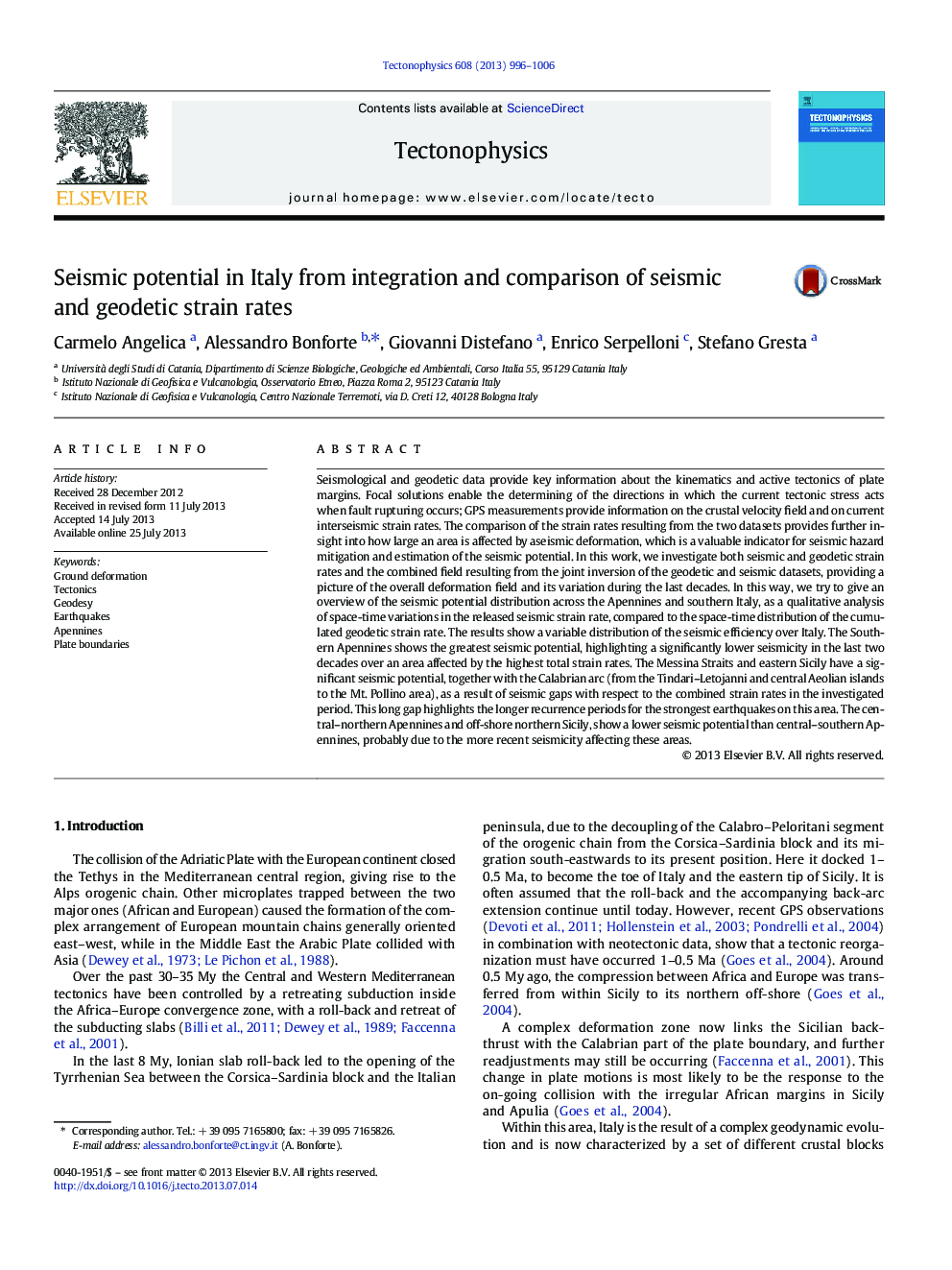| کد مقاله | کد نشریه | سال انتشار | مقاله انگلیسی | نسخه تمام متن |
|---|---|---|---|---|
| 6434029 | 1636779 | 2013 | 11 صفحه PDF | دانلود رایگان |
- We processed GPS data for networks lying over the Italian peninsula.
- We processed moment tensors of M â¥Â 4 earthquakes that occurred in Italy since 1977.
- We integrated both datasets to calculate the total strain rates.
- We calculated the seismic efficiency over the peninsula for different periods.
- Seismic efficiency and strain patterns highlight areas with higher seismic potential.
Seismological and geodetic data provide key information about the kinematics and active tectonics of plate margins. Focal solutions enable the determining of the directions in which the current tectonic stress acts when fault rupturing occurs; GPS measurements provide information on the crustal velocity field and on current interseismic strain rates. The comparison of the strain rates resulting from the two datasets provides further insight into how large an area is affected by aseismic deformation, which is a valuable indicator for seismic hazard mitigation and estimation of the seismic potential. In this work, we investigate both seismic and geodetic strain rates and the combined field resulting from the joint inversion of the geodetic and seismic datasets, providing a picture of the overall deformation field and its variation during the last decades. In this way, we try to give an overview of the seismic potential distribution across the Apennines and southern Italy, as a qualitative analysis of space-time variations in the released seismic strain rate, compared to the space-time distribution of the cumulated geodetic strain rate. The results show a variable distribution of the seismic efficiency over Italy. The Southern Apennines shows the greatest seismic potential, highlighting a significantly lower seismicity in the last two decades over an area affected by the highest total strain rates. The Messina Straits and eastern Sicily have a significant seismic potential, together with the Calabrian arc (from the Tindari-Letojanni and central Aeolian islands to the Mt. Pollino area), as a result of seismic gaps with respect to the combined strain rates in the investigated period. This long gap highlights the longer recurrence periods for the strongest earthquakes on this area. The central-northern Apennines and off-shore northern Sicily, show a lower seismic potential than central-southern Apennines, probably due to the more recent seismicity affecting these areas.
Journal: Tectonophysics - Volume 608, 26 November 2013, Pages 996-1006
